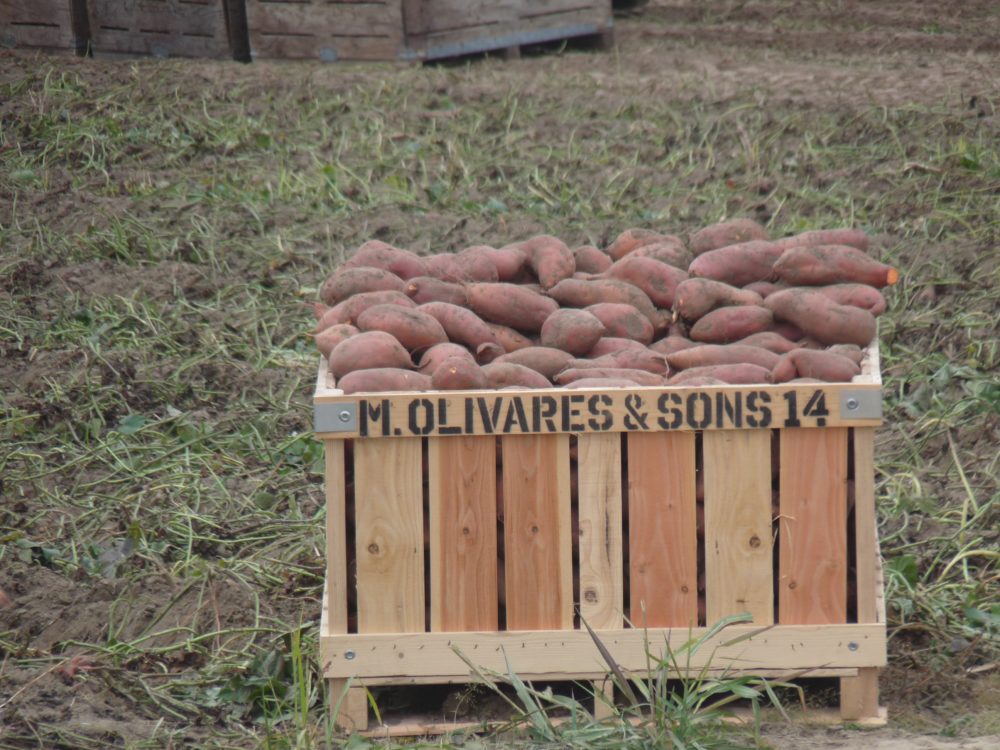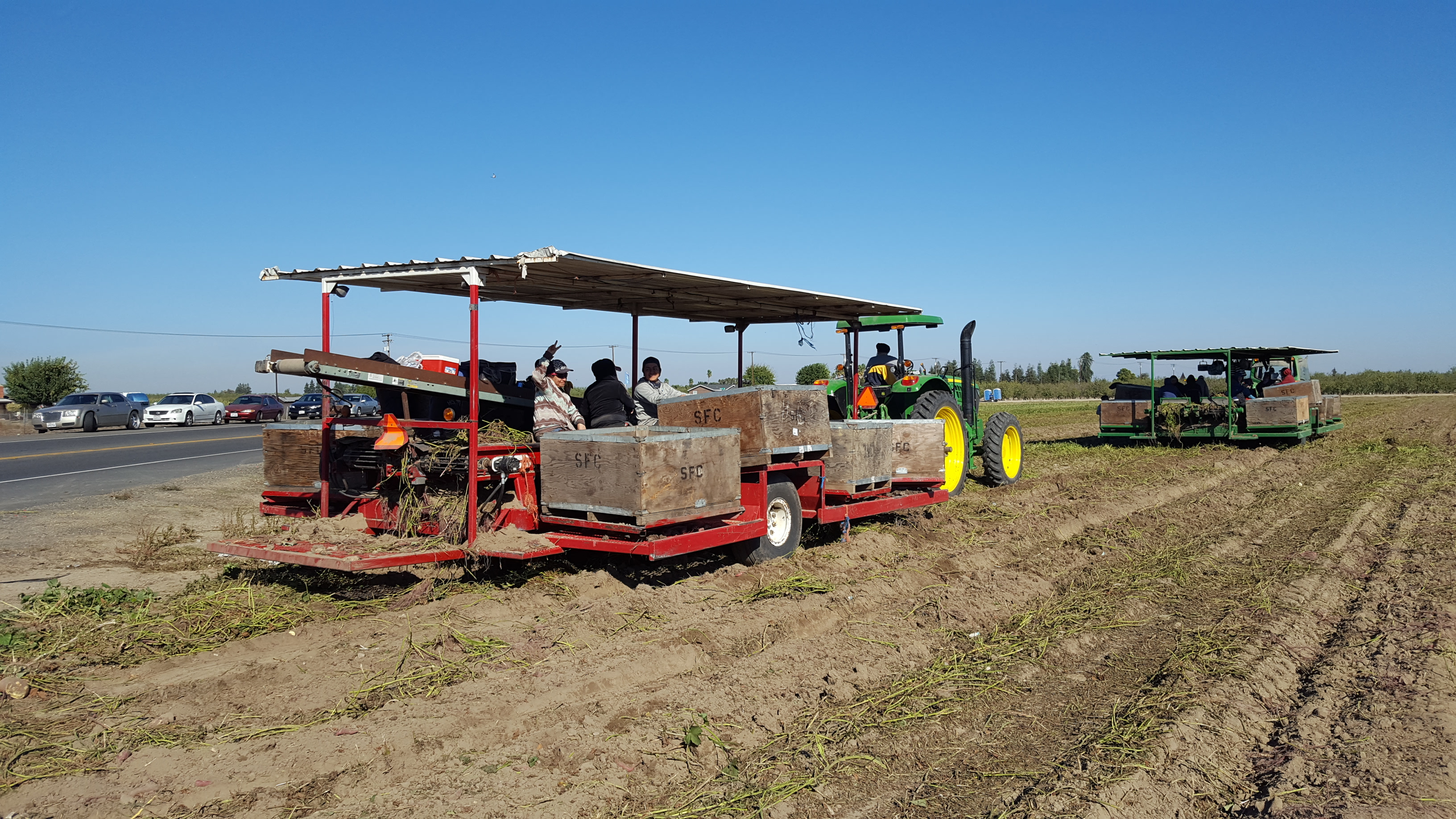Labor Challenges in Sweet Potatoes
Challenges Are High Demand for Innovation
By Mikenzi Meyers Associate Editor
Harvest for sweet potatoes is in full swing, which means long hours and high labor expenses for producers. Scott Stoddard, of the UC Cooperative Extension in Merced County, knows the difficult task at hand in managing time and money.
With new overtime laws in place, the extended work days during harvest can be costly to farmers. With insight into several operations, Stoddard explained, “Everybody is crunched and trying to get as much as they possibly can get done in a day.”
However, this isn’t the only issue farmers are facing, because although hourly pay is on the rise, labor is becoming more difficult to find.
Stoddard said, “I had a guy tell me last week when I was harvesting sweet potatoes that it is getting a little bit harder to find labor.”
All of these factors, he concluded, are driving forces for mechanical innovation.
Innovation and new pieces of equipment are continuing to “shake up” the industry, Stoddard noted. In a typical operation, it takes two passes in sweet potato fields to eliminate excess vines leading up to harvest. Stoddard said that the new machine is capable of removing vines pre-harvest in just one pass.
“It helps get rid of the extra little vines that are still left over after you flail mow the crop,” he explained.
Although this machine is costly, according to Stoddard, it is estimated to save about one person per harvester, which in the big picture can add up.
“It’s a little tweaking of the system, which will make sweet potato harvest more labor efficient.”

















